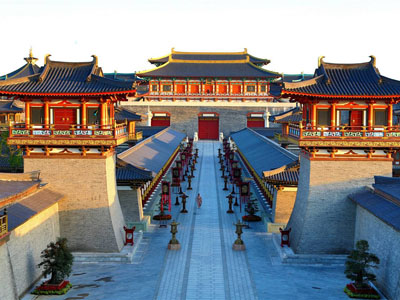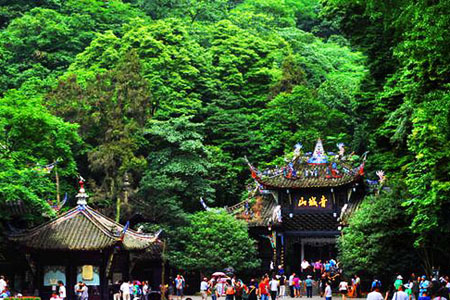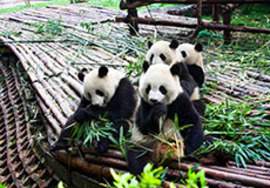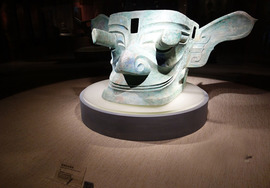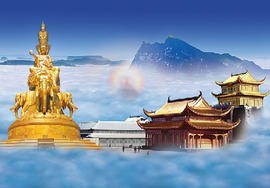Shangri-La,it was described as a fictional place in the 1933 novel Lost Horizon by British author James Hilton. The author Hilton described Shangri-La as a beautiful, mystical, harmonious valley in this book,meanwhile,it was guided from a lamasery, enclosed in the western end of the Kunlun Mountains.
Shangri-la city formerly known as "Zhongdian", the Tibetan name "Jiantang". Shangri-La appeared in the novel The Lost Horizon in the 1930s and was soon known as a film of the same name and won many Oscars. The Tibetan area of Shangri-La has a long history as well as many beautiful natural scenery. It has scenic spots such as Pudacuo National Park, Dekezong Old Town, Kadan Songtanlin Monastery, Tiger Leaping Gorge and so on.
Shangri-la means "the sun and the moon in the heart" in Tibetan language, which is the capital of Diqing Tibetan Autonomous Administration Prefecture in Yunnan Province. It is located in the northwest of Yunnan Province and the hinterland of the Hengduan Mountains Series on the East of Qinghai-Tibet Plateau. It is also the junction of Yunnan, Sichuan and Tibet provinces, and is the key point of the "Yunnan-Tibetan Tea-horse-Trading Old Road". It is connected with Daocheng County and Muli County of Sichuan Province in the east, Yulong County of Lijiang City, Weixi County and Deqin County of Deqing Prefecture across the Jinsha River in the southeast, and Derong County and Xiangcheng County of Sichuan Province in the northwest.
.


The Main Attractions of Shangri-la City:
Ganden Songtanlin Monastery
Songzanlin Monastery was built in 1679 AD, and the fifth Dalai Lama personally gave it the name "Kadan Songzanlin". Songzanlin Monastery is the largest Tibetan Buddhist temple in Yunnan Province, and one of the famous big monasteries in Kham District. It is also one of the Yellow school, Gelupa Section Center in Sichuan and Yunnan provinces. It plays a pivotal position in the whole Tibetan area, and is known as the "Mini Potala Palace". The whole temple imitates the layout of the Potala Palace in Lhasa, and is built on the mountain trend. The main hall is solemn and luxurious, and the murals in the hall are colorful and exquisite. They mainly describe historical allusions and promoting Buddhist teachings. Zancang, Jikang two main temple was built at the highest point, located in the center of the temple, with the Han style temple architectural style. Songzanlin Temple has eight figures of Buddha, shell leaf scriptures, colorful gold juice painted Thangka and golden lanterns of the fifth and seventh Dalai periods.
Songzanlin Temple is built on the Mountain and looks like an ancient castle. It integrates the great Tibetan construction arts and is also known as the "Tibetan Art Museum".
Dukezong Old Town
Dukezong Old Town is the best preserved and largest Tibetan dwellings in China. In 676-679 AD, Tubo Kingdom set up a fortress on the top of the big turtle-shaped mountain, named "Dukezong". One Tibetan pronunciation contains two meanings, one is "a castle built on stone" and the other is "moonlight city". The later ancient city was built around the fortress on the top of the hill. For the horse gang crossing the Tea-horse old Road, the ancient city of Dukezong is an important town on the Tea-horse-trade Old Road, and also the first stop after the horse gang enters Tibet, which is a very comfortable road.
Pudatso National Park
Pudacuo is China's first national park, located 22 kilometers east of Shangri-La County, Diqing Tibetan Autonomous Prefecture, Yunnan Province. "Pudacuo" means to reach the other side of the lake by a boat. Pudacuo takes the Bita Sea and the Lake as the main components, between 3500 meters and 4159 meters. Pudacuo is an important part of the "three rivers" scenic area. The park has geological and landform, lakes and wetlands, forest meadows, valley streams, rare animals and plants, etc. The original ecological environment in Pudacuo national Park is well preserved.
Haba Snow Mountain
Haba Snow Mountain Nature Reserve is located in the southeast of Shangri-La County, 130 kilometers away from the county seat, with a total area of 21908 hectares. The main peak is 5396 meters above sea level, the lowest point is the riverside village, only 1550 meters, and the elevation difference is 3896 meters. The whole reserve over 4000 meters is steep cliffs and alpine stone beach, the landform is distributed in a step shape, followed by subtropical, temperate, temperate cold zone, cold zone and other climate zones, the temperature difference from the foot of the mountain to the top of the mountain is 22.8℃. The reserve is a cold temperate coniferous forest type nature reserve to protect the natural landscape of the vertical distribution of alpine forests and the wild animals and plants living there.
Shangri-La Yunnan Golden Monkey National Park
Shangri-La Yunnan snub-nosed Monkey National Park is located in Weixi County, Diqen Prefecture. The park is 64KM away from Weixi County, 123KM away from Shangri-La City, 175KM away from Lijiang City and 251KM away from Deqin County.
Golden Monkey National Park is an important part of the World Natural Heritage Reserve and a national key scenery. It covers an area of 334.16 square kilometers. It has the largest population of Yunnan Golden Monkey in the world and has a scientific research base. Shangri-La Yunnan Golden Monkey National Park is a paradise on earth for harmony between man and nature and man. Those who walk in Shangri-La Yunnan Golden Monkey National Park are intoxicated by the landscape in Shangri-La Yunnan Golden Monkey National Park. The park covers an area of 334.16 square kilometers, and the endangered species Yunnan golden monkey could be pared with the Giant panda, with scarlet "sexy" lips, the most human face, white and red, black and white and gray fluff halo yellow in the sun.
Tiger Leaping Gorge
Tiger Leaping Gorge scenic spot is located in Tiger Leaping Gorge Town, Shangri-La City. It is 80 kilometers away from the urban area of Lijiang City and in the upper reaches of Jinsha River, with a total length of 17 kilometers, 25 kilometers of circuitous road and a vertical height difference of more than 3900 meters. It is one of the deepest canyons in China.
Baishuitai
Baishuitai, meaning white water Platform, is located at the foot of Haba Snow Mountain, Baidi Village of Sanba Township, southeast of Shangri-La county. It is 101 kilometers away from the county seat and 2380 meters above sea level. It is the birthplace of Naxi Dongba religion. It is a natural wonder because of the calcium carbonate dissolved in the spring water. The spring water containing calcium bicarbonate slowly flows down, the carbonate gradually dissolving and forming the curtain like layers of terraces, known as the "immortal heritage field", an area of about 3 square kilometers. It is the largest Huaquan terrace in China. In the distance, the shape of Baishuitai in the green mountains is really like layers of terraces, shining in the sun, and just like the frozen waterfall in the photography works. Stepping on the white stone is unspeakable cool feeling.
Meili Snow Mountain
Meili Snow Mountain, also known as Snow Mountain Prince, belongs to the Hengduan Mountain Mountain range. It is located between the Nujiang River and Lancang River (Mekon River ) in the middle of Hengduanshan Mountain about 10 kilometers in Deqin County, Shangrila. There are 13 peaks with an average altitude of over 6,000 meters, called "Prince 13 Peak". The main peak of Kawagebo Peak is 6,740 meters above sea level, which is the highest peak in Yunnan. In the 1930s, American scholars praised Kagebo Peak as "the most beautiful mountain in the world".
